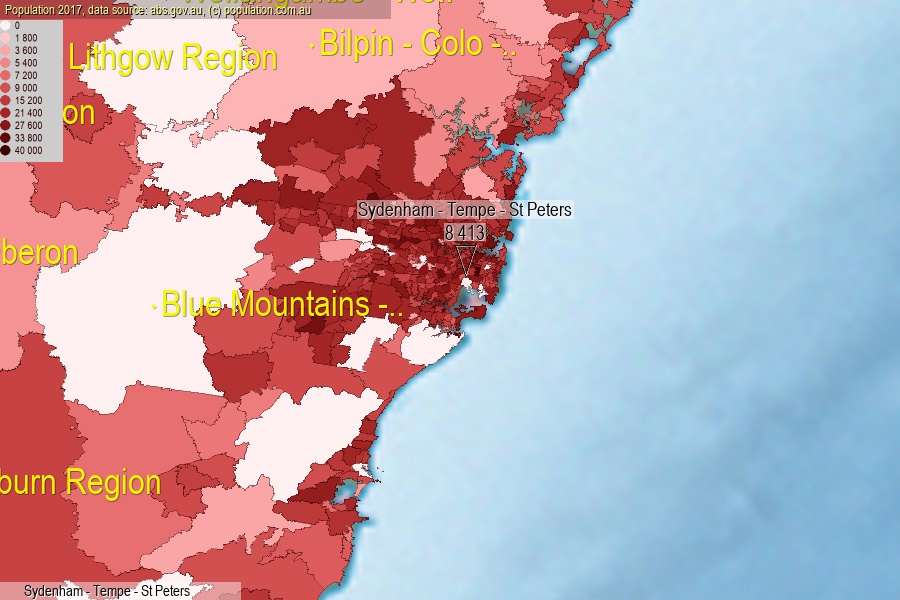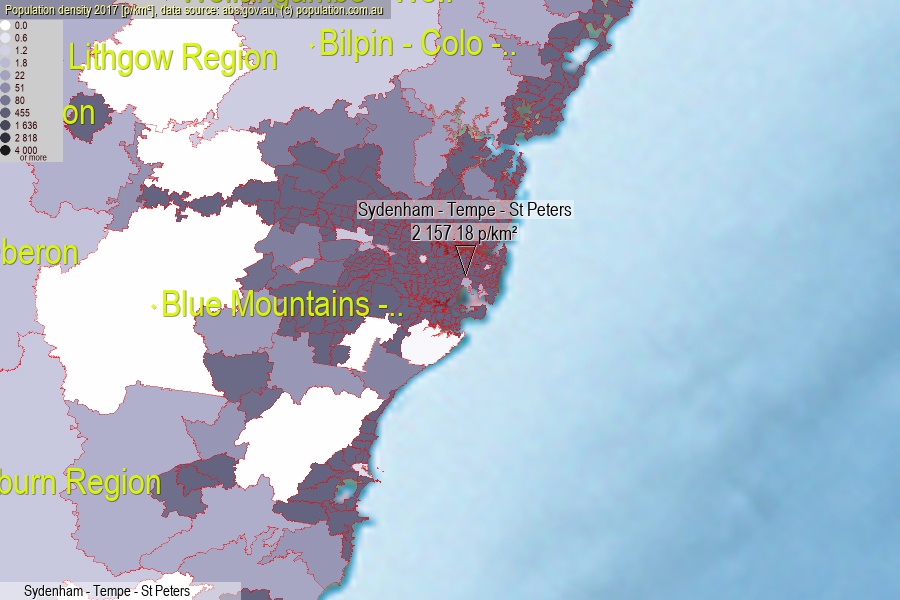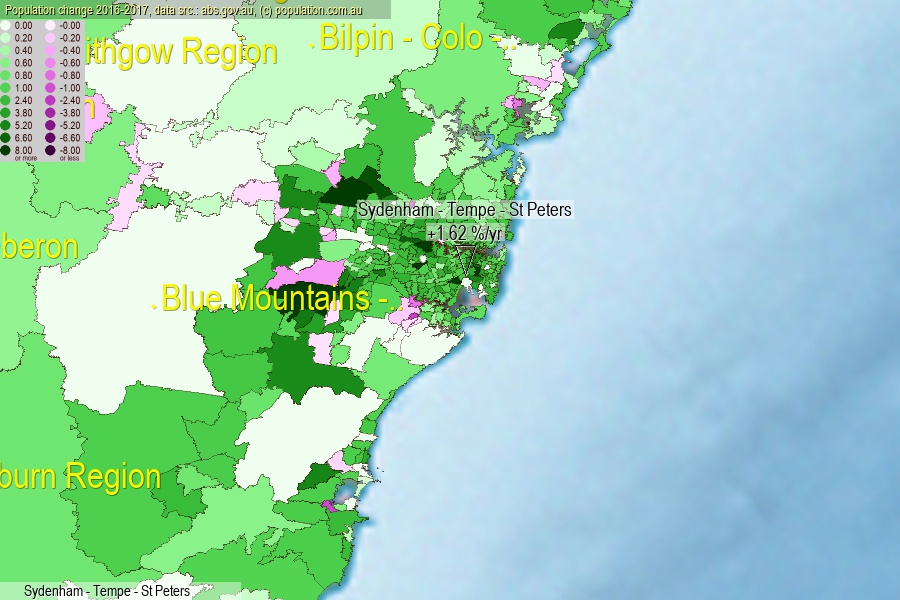 population.com.au
population.com.auLast official estimated population of Sydenham - Tempe - St Peters (as Statistical Area Level 2) was 8 413 people (on 2017-06-30)[2]. This was 0.03% of total Australian population and 0.106% of NSW population. Area of Sydenham - Tempe - St Peters is 3.90 km², in this year population density was 2 157.18 p/km² . If population growth rate would be same as in period 2016-2017 (+1.62%/yr), Sydenham - Tempe - St Peters population in 2025 would be 9 566. [0]



Click to enlarge. Sydenham - Tempe - St Peters is located in the center of the images.
Population [people], population density [p./km²] and population change [%/year] [2]
View borders » (new window) [4]
[1991-1992] 0.00 %/Yr.
[1992-1993] -3.26 %/Yr.
[1993-1994] -0.66 %/Yr.
[1994-1995] -2.41 %/Yr.
[1995-1996] -0.32 %/Yr.
[1996-1997] -0.56 %/Yr.
[1997-1998] -3.52 %/Yr.
[1998-1999] -0.35 %/Yr.
[1999-2000] -0.89 %/Yr.
[2000-2001] -0.97 %/Yr.
[2001-2002] +1.38 %/Yr.
[2002-2003] -0.48 %/Yr.
[2003-2004] -0.44 %/Yr.
[2004-2005] +0.50 %/Yr.
[2005-2006] +1.43 %/Yr.
[2006-2007] +2.21 %/Yr.
[2007-2008] +2.67 %/Yr.
[2008-2009] +2.83 %/Yr.
[2009-2010] +2.64 %/Yr.
[2010-2011] +0.58 %/Yr.
[2011-2012] +0.72 %/Yr.
[2012-2013] +1.59 %/Yr.
[2013-2014] +1.58 %/Yr.
[2014-2015] +1.68 %/Yr.
[2015-2016] +2.05 %/Yr.
[2016-2017] +1.62 %/Yr.
[0] Calculated with linear interpolation from officially estimated population
[1] Read more about SA2 and Australian Statistical Geography Standard (ASGS) on abs.gov.au
[2] Population data from Australian Bureau of Statistics (Population and density: 2017; change: 2016-2017)
[3] Digital Boundaries: Australian Statistical Geography Standard (ASGS) 2016.
[4] Border coordinates are simplifyed using Ramer-Douglas-Peucker algorithm.